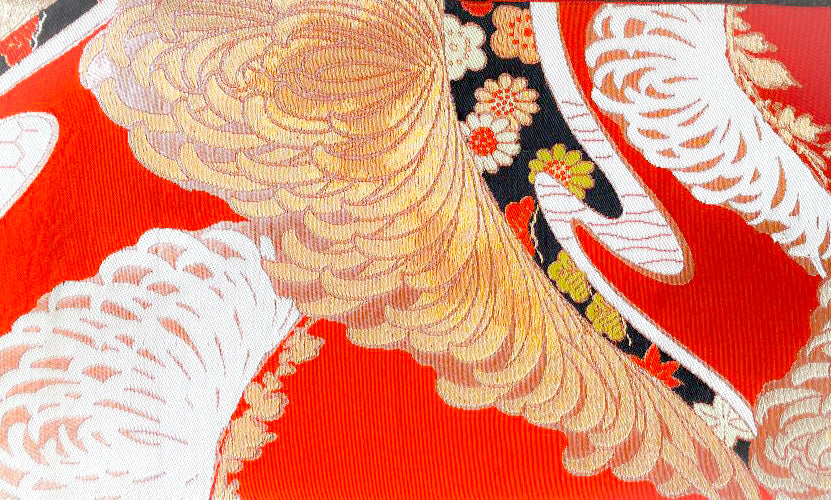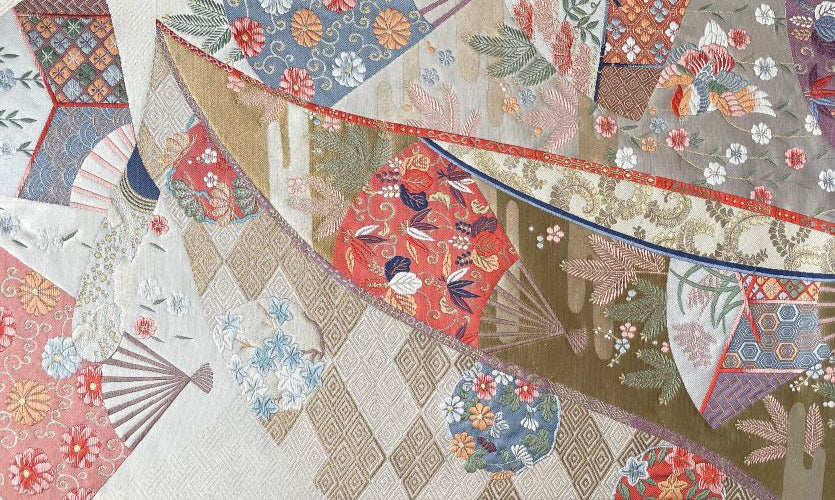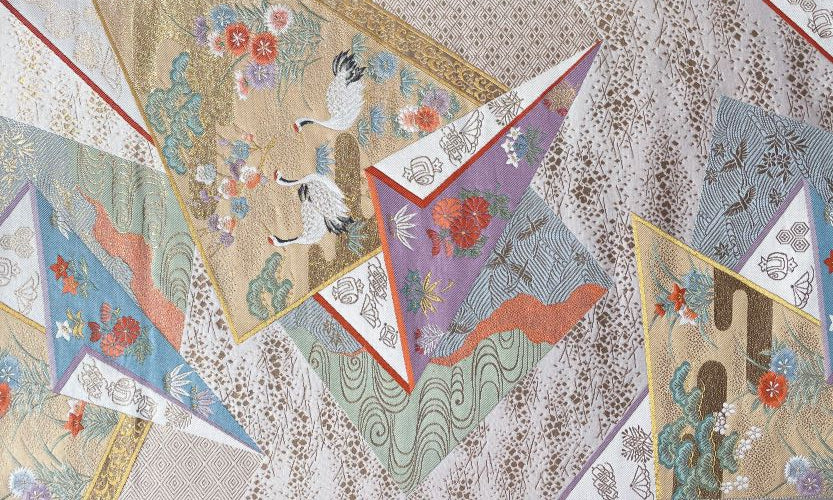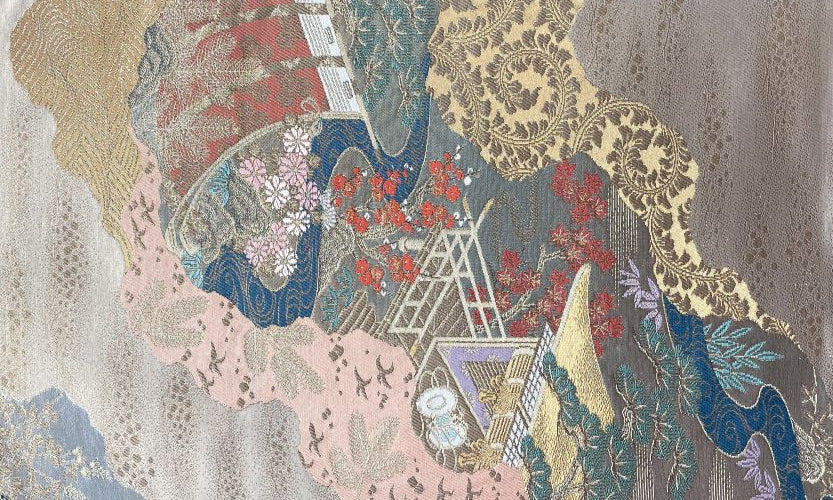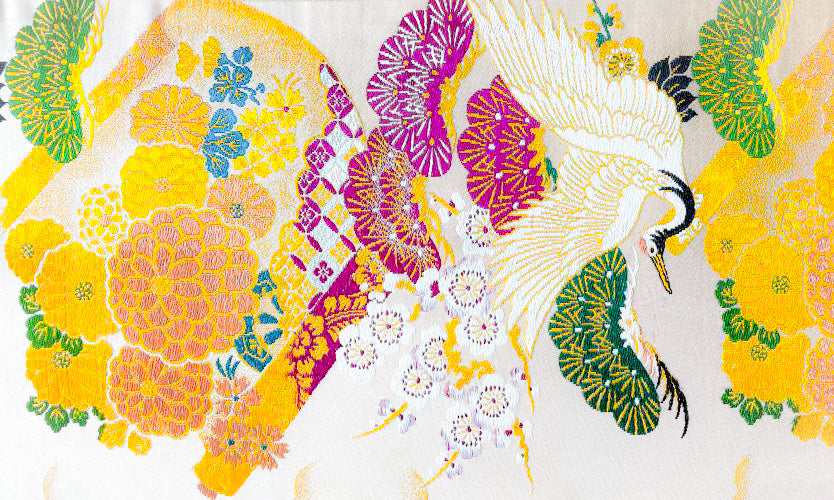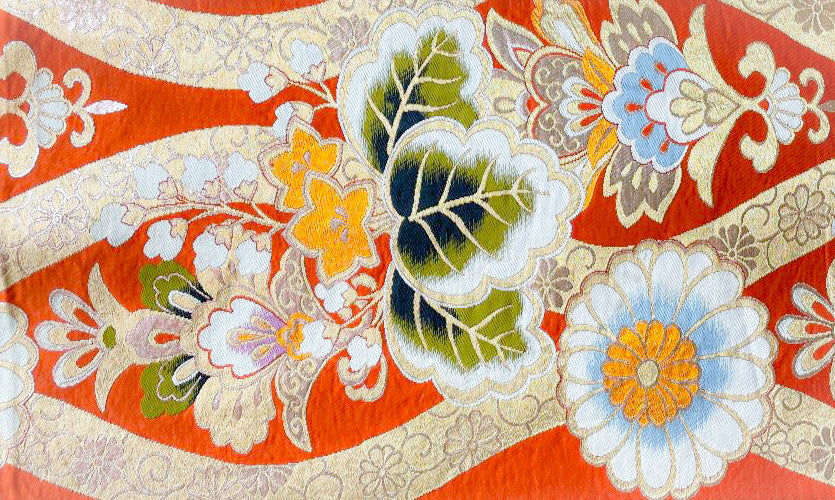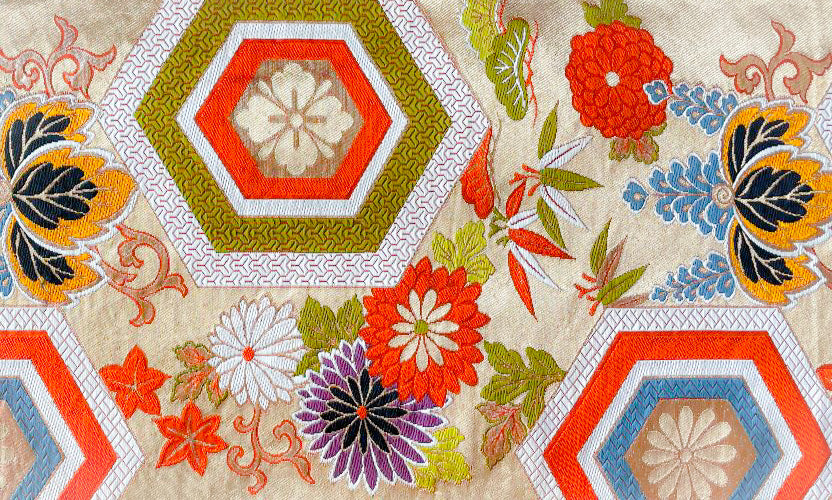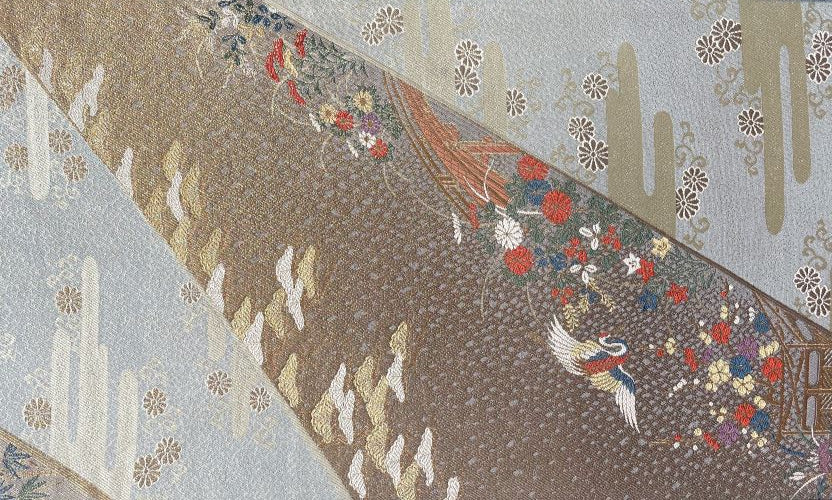松 -Pine tree-
1年を通して葉の色が変わらないことから、「常磐木」とも呼ばれる松。平安時代から着物の柄として用いられ、「老松」「若松」「松葉」「松毬」「吹き寄せ」など、現代にも受け継がれる多様な松文様が登場したのは、江戸時代頃からと考えられています。
The evergreen pine, known as "常磐木" (tokiwagi) for its leaves that retain their color throughout the year, has been a symbol of endurance. Since the Heian period, it has been a prevalent motif in kimono patterns. Various pine patterns such as "老松" (roushou - old pine), "若松" (wakamatsu - young pine), "松葉" (matsuba - pine needles), "松毬" (matsubamari - pine cones), and "吹き寄せ" (fukiyose - blown pine) emerged around the Edo period, continuing to grace contemporary designs. This enduring tradition celebrates the timeless beauty and resilience of the pine tree.
枝松 -Pine tree branch-
風雪に耐え年中緑色の葉をつける松の力強さを表現した文様です。松は、長寿の象徴として古くから縁起物として用いられてきた植物で、長寿の祝いをはじめ、季節を問わずおめでたい席にお使いいただける文様です。
An impressive pattern of powerful pine branches.
Since pine trees are said to have a lifespan of 1,000 years, they can be used for various happy occasions regardless of the season, including the celebration of longevity.
この文様・和柄が用いられている帯地
Obi fabrics with this Japanese pattern from the obico selection


